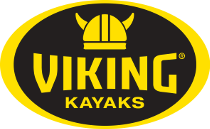Kayak Fishing with hard body lures Q&A
1:29PM 9th Dec 13
Below we share a Q&A session with Stephen Tapp which was sparked by many of our customers wanting to know more about kayak fishing with hard body lures (following this recent article "fooling the big red" ). Lots of great questions her answered by Stephen who has been trialling hard body lures of all shapes and sises for some time now...
Question:
Would love to see some info on suitable lures?
Stephen Replies:
As many have said, casting and trolling bibbed lures is an addictive pastime. I'm constantly surprised at how hard snapper will hit these lures, and how hard they fight when they have some depth to play with (snapper hooked close to the surface run like rat kings). I've been doing quite a bit more with these lures and will be publishing more material later this summer. For snapper though, a good place to start is any lure designed for targeting barra in Aussie.
Personally the two top performers have been the Dr Evil (slightly more snapper emphasis) and the Tomahawk (from the same designer, catches snapper but has a slightly better kingfish emphasis without requiring you to paddle your arms off). Lots of other lures have produced the goods too, and it can be a trial trying to limit your purchases when confronted with some of the selections available.
Re purchasing in NZ: I'm aware of two organizations trying to secure distribution rights. Currently the best option is through mail order out of Australia.
Question:
Out of interest, what rod and reel combo is best for trolling a hard body?
Stephen Replies:
Some lures create more drag than others so it's important to balance this with the expected strike force. Personally, when chasing snapper I prefer round bodied baitcasters on a 6'6" rod with a tip soft enough to show plenty of vibration with the lure (lets you find the "sweet spot" trolling speed by monitoring how the tip moves as you speed up your paddle stroke), but one that also has plenty of guts so you can put the hurt on a fish diving for the kelp.
Question:
I assume the general preference with this type of trolling is a floating lure that dives to the desired depth?
Stephen Replies:
I like using floating lures when trolling as I'm often fishing over foul and have more than one lure out - floating lures give a greater margin for error when you get struck hard and dragged to a rapid stop by big fish. I've had good success with intermediates and sinking hard bodies in deeper water and when casting around schooling fish (targeting snapper and kings under mack, trevally, and kahawai schools).
Lure colours is an interesting discussion topic. From kayaks my best performing colour for kings has been the "red head" pattern. For snapper my best Dr Evil colours have been gold, then purple, then mackerel. With the Cutting Edge (Rob Gaden) Tomahawks the purple colours win hands-down. To be fair, if I like a colour I do tend to put it on first, therefore it gets more water time (statistically a better chance of landing fish). I try and make a point of running the other colours, and so far have taken fish on all the ones I've bought. The only ones I've grown a little wary of when chasing snapper are the extremely gaudy ones like the StrikePro Supersonic in purple; I catch far more on the "clear ghost" and "electric silver" (not as gaudy as it sounds) than on the "deep fixx" or "purple illusion".
Question:
Hey Stephen, just looking at the Tomahawk, is there any particular length that is recommended? Come in 55mm, 75mm, 95mm lengths.
Stephen Replies:
I prefer the 95mm...
Question:
That looks like a fat as bug... I guess the length has to do with the depth it dives?
Stephen Replies:
The length and shape of the lure, the angle of the bib, and the curve in the body all have a role to play in how deep it dives. An interesting phenomenon is what happens when you hit the right paddling speed with this little puppy - at the sweet spot it vibrates hard enough to really rattle the front end of the kayak, you can even feel it through the seat. This may be the reason I've caught kings on it at our modest paddling speeds when with other lures they'll come in for a look but not bite.
Question:
May I ask how do you know that the Kingies are inspecting lures but not striking? I normally troll at least 2-3 boat lengths behind (normally much further back) and have little idea on what might be following.
Stephen Replies:
On several occasions working areas I know hold fish (with plenty of sign on the sounder) I've had mates hold station while I paddled past...
... and ended up with them screaming "OMG LOOK AT THOSE KINGS, PADDLE FASTER!!!"...
... and on the next pass I was left dodging lures and gaff strikes as they tried to snag the fish following along behind :o :lol:
Question:
They look a good solid hook Stephen what are they?
Stephen Replies:
They're solid all right, they're a forged VMC designed for the tropics, product code VMC T8527PS rated in some catalogues as 6XStrong
Question:
What size hook are they Stephen? Do you change the split ring that the lure comes with as well?
Stephen Replies:
Size wise I like to match the hooks the lure was originally rigged with, or if they were particularly light gauge, go down one size so the weight of the heavier hooks doesn't drown the lure. Re the split rings I change to heavy gauge Owners.
Question:
What do you think about running doubles instead of triples on these lures? I've had the most success on lures with doubles on them and there's no need to run a split ring...
Stephen Replies:
Doubles can work very well, especially if the lure has been designed for them in the first place (if so they usually come rigged with them). The problem is being sure you're not altering the action of the lure by changing hook styles (from trebles to doubles or singles to doubles).
As a general rule I first run lures just as they've been supplied so I can get an idea of how they're supposed to perform. I then play around "upgrading", and if possible run a lure I've "enhanced" alongside one with it's original rigging. The reason I put quote marks on those words is that I often find my fiddling reduced the performance of a lure.
IMHO the main benefit of doubles is almost treble like ability to snag fish with less risk of having one part of the hook in one jaw and another prong in the other jaw. In this situation the fish can use its jaws to work the parts of the hook against each other wearing holes that can cause a dropped fish, or causing metal fatigue in the hook resulting in bent or broken prongs.
With lures up to 120mm where I'm not specifically targeting kingfish I now leave them as rigged (apart from using stronger hooks and split rings). I've found on snapper in particular my catch rate is higher with treble hooks when compared to doubles and singles...
Read the full article on trolling hard bodies for snapper HERE





